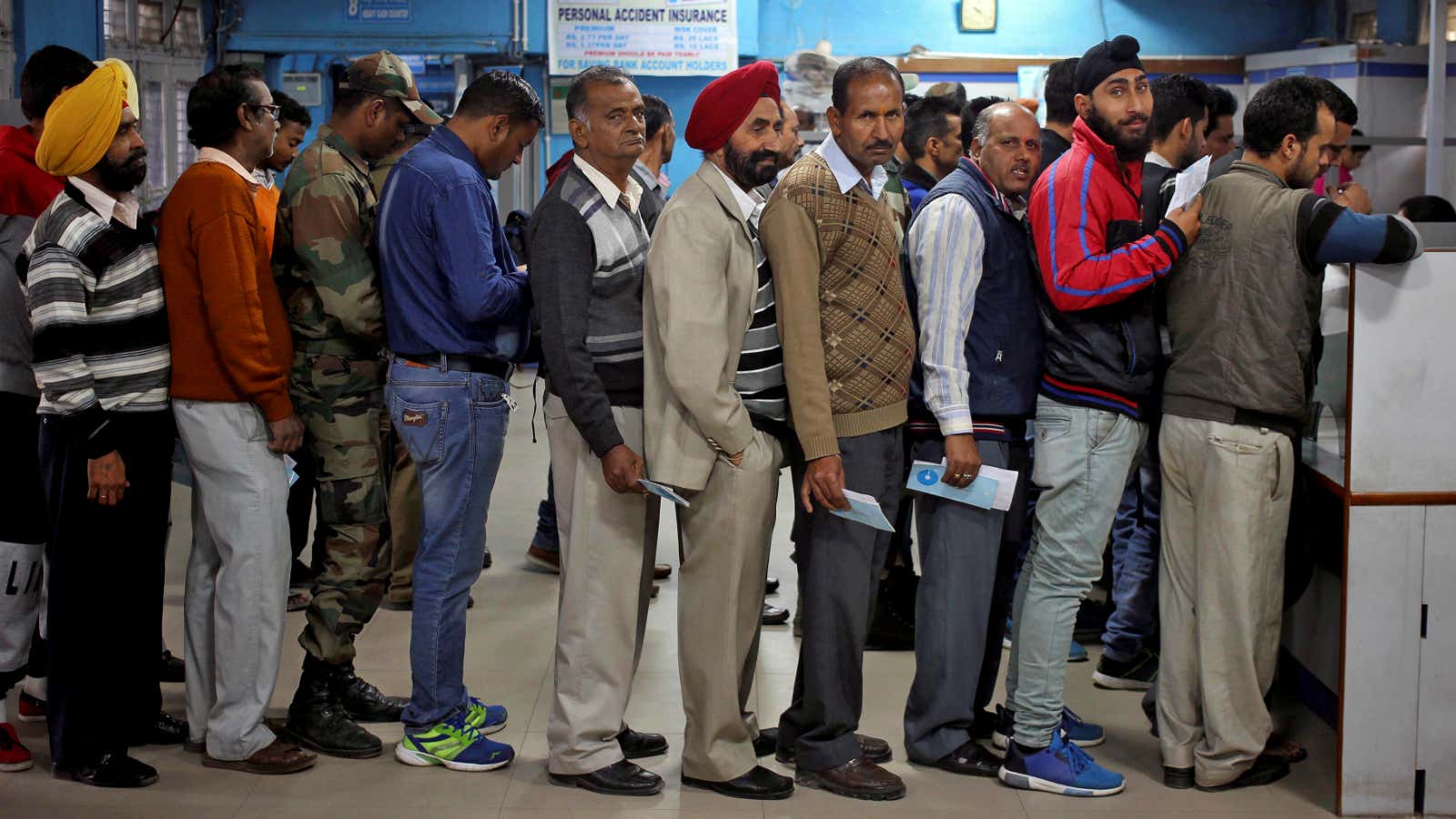The Narendra Modi government’s flagship financial inclusion scheme—the Pradhan Mantri Jan-Dhan Yojana (PMJDY)—has always been about big numbers.
On Aug. 28, 2014, the first day of the scheme’s roll out, some 15 million bank accounts were reportedly opened. A year later, the number of accounts swelled to 175 million, government data shows. By Jan. 04, 2017, there were over 265 million accounts under the scheme, although 24% of them had no money in them.
When the Modi government announced its shock move to demonetise 86% of India’s currency (by value) on Nov. 08, this large base of PMJDY accounts came handy in the push to make the economy less dependent on cash. Since demonetisation, cash deposits in PMJDY accounts have more than doubled to Rs87,000 crore.
Yet, during this period of intense pressure on banks, there’s been a rather curious development: Over four million PMJDY accounts, across a handful of public and private banks, have been closed—and there’s nothing to explain this.
Between Nov. 30 and Dec. 28, 2016, some 4,567,107 such accounts were closed across five banks, PMJDY data accessed on Jan. 02 shows.
(*RRB stands for a regional rural bank, which is a rural lending institution. The State Bank of India has a network of 14 RRBs, with 3,784 branches, under its purview.)
This is a peculiar situation for a number of reasons. For one, an analysis of PMJDY data of public sector banks, between September 2014 to January 2017, reveals that what transpired between November and December last year is the biggest closure of such accounts so far. Furthermore, if indeed such closures took place, they happened amid the post-demonetisation chaos, undoubtedly one of the most demanding periods for Indian banks in a long time.
Even more bizarre is the fact that when Quartz reached out to these banks—and the government—for explanations, there were no two similar reasons provided, i.e. if they were provided at all.
The following is what they had to say.
Department of financial services: This finance ministry arm administers the PMJDY scheme, but had no explanations for these closures. Six days after Quartz emailed a detailed questionnaire, a department official responsible for the PMJDY could only say that they were looking into the matter.
UCO Bank: A general manager (GM) at the Kolkata-based lender, which saw the biggest drop in PMJDY accounts, explained that these closures were due to a data cleanup. When the PMJDY scheme was launched in 2014, the official said, banks apparently added many non-PMJDY accounts to those opened under the scheme to meet targets. Now, these non-PMJDY accounts were being culled.
Canara Bank: Despite repeated attempts to contact him, the GM in charge of financial inclusion at the Bengaluru-based lender remained unreachable.
State Bank of India (RRB): The GM in charge of financial inclusion could not explain the decrease. The rural banks under the lender, he said, report the data independently to the department of financial services, although the PMJDY database displays them under the State Bank of India head in the RRBs section.
Axis Bank: India’s third-largest private bank by assets said the drop was actually an error. “…(T)he report with the PMJDY numbers for 28th December 2016 has been erroneously uploaded in the DFS portal with some omission in data table, due to a technical glitch,” a spokesperson explained. The total number of PMJDY accounts with the bank had actually increased to 656,263 by Dec. 28, 2016, he added, citing the revised data.
J&K Bank: The bank primarily serves the state of Jammu & Kashmir and is India’s only private lender where the number of PMJDY accounts have dropped steadily since October 2016. A vice-president in charge of financial inclusion explained that zero-balance accounts with no transactions over the past year had been excluded from the total. ”Accounts that remain dormant for one year, we exclude it,” he said. “Nothing has been done to the account. We show them as inactive.”
Altogether, the different reasons offered don’t quite explain what transpired. If anything, they raise serious doubts about the quality of PMJDY data that the Modi government has as proof of the success of its primary financial inclusion scheme.
This post will be updated if, and when, the department of financial services responds.
